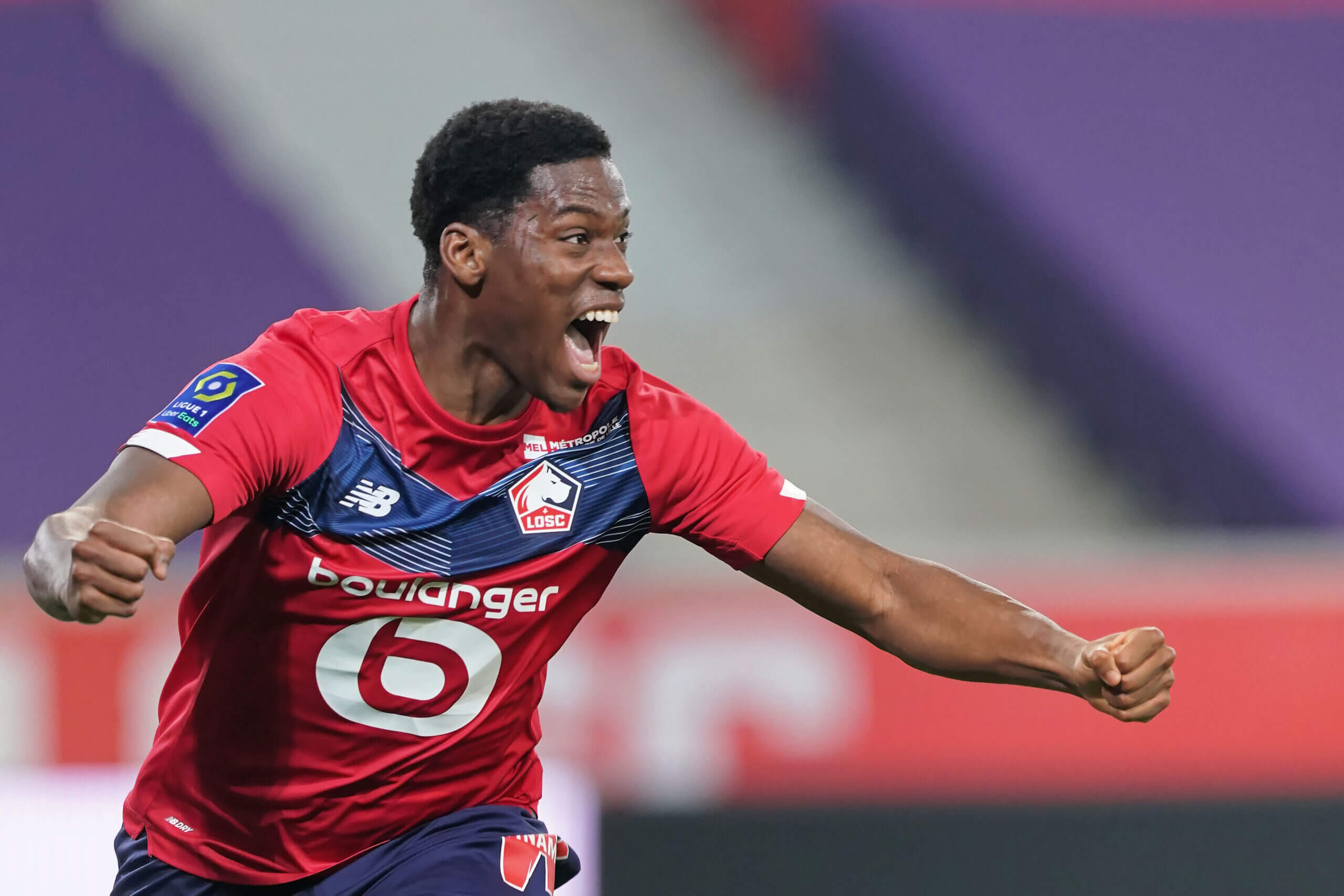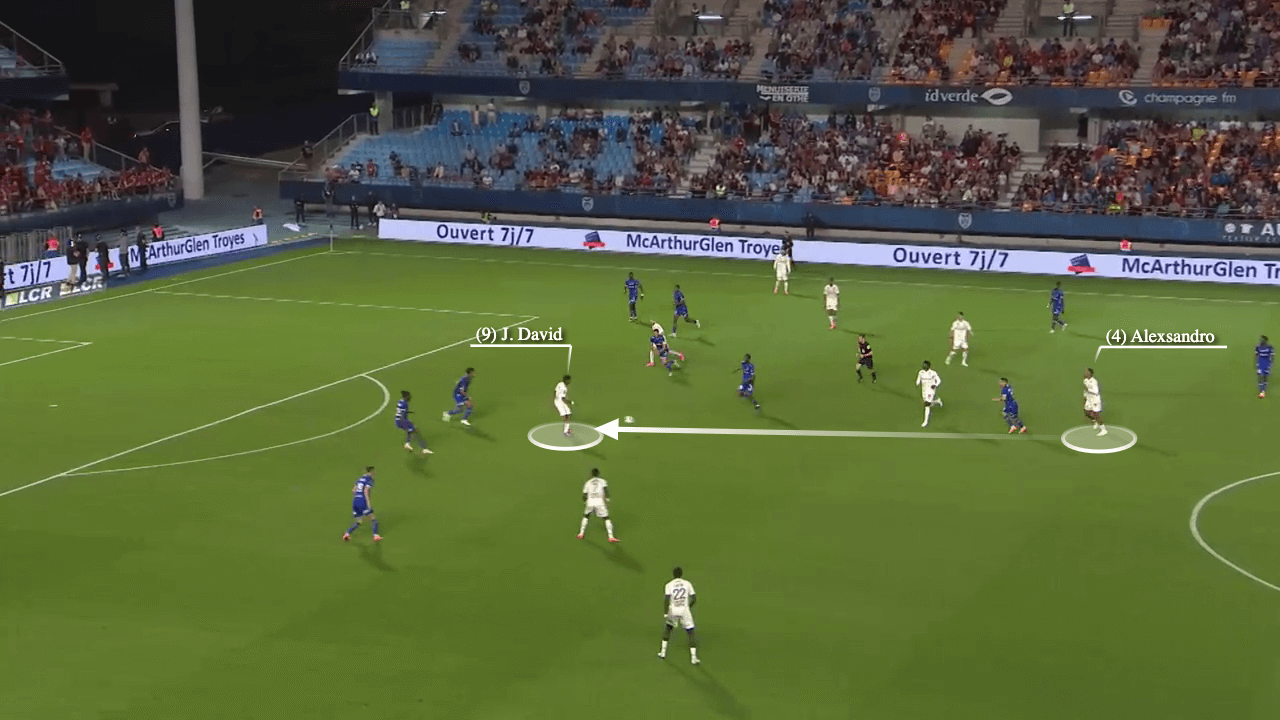This summer we are running a series profiling 50 exciting players under the age of 25 — who they are, how they play, and why they could be attracting interest in the coming transfer windows.
So far, we have run the rule over a striker on Manchester United’s radar, Gen-Z’s answer to Sergio Busquets and the France forward who has gone from zero to €100million in the space of a year. You can find all our profiles until now here.
Next up is a Canada striker who has been tearing it up in Ligue 1…
“Anywhere you go, you want to be a household name. I think you want to put your name out there and be the one that people talk about.”
At just 23 years old, Jonathan David is not short of confidence when mapping out his career.
From playing amateur football for Ottawa Internationals to becoming his country’s most expensive player of all time, you can see why the Canadian is bullish in ensuring his trajectory continues to move sharply upwards.
Advertisement
Speculation is rife when it comes to David’s future this summer, with many top European clubs in the market for a centre forward who can spearhead their attack for the foreseeable future.
With David still yet to hit his peak, just how high is his ceiling?
As the only Lille player to reach double figures last season, David hoovered up a significant share of his side’s goals in Ligue 1.
Not only was his tally of 24 strikes comfortably higher than any of his team-mates, but his record was only bettered by Alexandre Lacazette (27) and Kylian Mbappe (29) across France’s top division.
David has improved each year in front of goal in a Lille shirt, with those 24 goals building on 15 in 2021-22 and 13 in 2020-21 — albeit 10 strikes were from the penalty spot in 2022-23, padding out those numbers quite notably.
This season’s more clinical version of David highlights the evolution of his role across his three years in northern France.
In his debut campaign — which saw Lille win a shock league title by a single point ahead of Paris Saint-Germain — David was a relentless pressing machine, dovetailing brilliantly with strike partner Burak Yilmaz in Christophe Galtier’s 4-4-2 system.

After Lille’s underwhelming title defence under Jocelyn Gourvennec — finishing tenth in Ligue 1 — David has since adapted to playing as a lone striker in a 4-2-3-1 under Paulo Fonseca, who has reignited Lille’s energetic style off the ball. Rather than Yilmaz, David now has No 10 Remy Cabella as his attacking provider, with the Frenchman assisting five of David’s 14 non-penalty goals.
If you were to grade David’s rate of 0.4 non-penalty goals per 90, it would probably be a B+ — not a bad return, but close to one goal every three games has room for improvement.
That rate was the 19th highest in Ligue 1 last season, but a look at the location of David’s strikes suggests a clinical poacher — often finishing first time between the width of the goalframe.
Advertisement
When looking at his shot map in Ligue 1 last season, 34 of his 94 non-penalty shots were with his ‘weaker’ left foot. For opposition defenders, one attribute they don’t want a striker to have is the ability to work the ball onto either foot to get a shot away.
In that regard, David is a nightmare to play against.

Try to show him one way and he can find space to work an opportunity in the other direction.
Take this example against Toulouse at the start of the 2022-23 campaign. David is running away from goal and is the only Lille player in the penalty area. The angle for a shot from his right foot is covered by both defender and goalkeeper.

However, David chops onto his left foot, and from a tight angle…

… wraps his foot around the ball to fire it into the top corner.

A finish against Auxerre was almost a carbon copy. As David faces up his opposite number from the right side of attack…

… he is shown onto his left foot but remains undeterred by firing it towards the far post.
Same situation, same outcome.

Crucially, these are not ‘hit and hope’ shots; they are delicate finishes that have been refined on the training field.
“It’s something that I’ve worked on since I was young,” David said after his left-footed finish helped Canada to a 2-0 victory over Panama earlier this month.
“If you want to be a top striker, you have to be able to shoot and be very good with both feet so players can’t anticipate what foot you’re going to use. So that’s why I’ve worked on both feet. I’d say my left foot is pretty good but I think I can still get better.”
David’s season-by-season goal tally has been highly impressive, but zoom in a little closer and there is an element of feast and famine to his finishing.
During the 2021-22 season, David’s 12 league goals led the Ligue 1 scoring charts by January. However, just one league goal in 17 games from January to May was a drought that would leave most centre-forwards in a cold sweat.
Advertisement
Things have been better in 2022-23, with five games his longest barren run in the league — but it is important to note that it is not necessarily David’s shot conversion that has fallen below expectation during this period.
Below, we can explore the rolling 900-minute trend of David’s non-penalty goals compared with his expected goals (xG) during his time at Lille. As you can see, there have been notable dips in the quality of chances he has found himself in — particularly during Lille’s disappointing 2021-22 campaign — but David has largely converted the opportunities he has had at a rate you would expect him to.
In a team generating more chances for David, you would not be surprised to see that goal tally kick on further.

Fortunately, goalscoring is not the sole weapon in David’s arsenal. His pace is a constant threat to stretch defences, but the forward will frequently look to link up with the rather than cut an isolated figure.

When considering his all-round game, The Athletic have previously reported that David wants to get better at creating chances for himself and improving his back-to-goal play against stronger defenders.
An initial glance at David’s profile would suggest that his ball retention is already strong, with a pass completion rate of 82 per cent putting him in the top three per cent among forwards in Ligue 1 last season.
His hold-up play is good but with similar room for improvement.
David will frequently drift into half-spaces and drop deeper to receive the ball, playing a simple wall pass with his back to goal, returning the ball first time to one of his midfield team-mates and allowing wide players to make penetrative runs into the space he has just opened up.
However, if David is going to be successful in playing against tougher opponents — and be spoken about as a genuine replacement for Karim Benzema — he could refine his hold-up play further, helping the ball to stick to allow his team to advance up the pitch.
Advertisement
David’s experience and decision-making will naturally develop as his career progresses and he becomes more aware of the space around him. For example, here we see David receive a through ball from team-mate Edon Zhegrova.
As the pass comes in, he has the time and space to open his body up and take a touch away from the congested area.

Instead, David plays a first-time wall pass back to Zhegrova as defenders close him down.

As the ball is immediately returned to David, he now has four players bearing down on him with just two team-mates nearby, and he eventually gives up possession.

Similarly, against Troyes, David receives a difficult bouncing pass from Alexsandro with his back to goal. He has time to take a touch and bring the ball down.

But instead, David elects to open his body up and play a first-time pass to Jonathan Bamba that falls short…

… and this allows Troyes to recover the ball and start their own attack.

When executed correctly, these first-time passes can be a quick way to speed up the attack and spin in behind.
However, refining the skill of hold-up play, feeling the contact from the defender behind and still retaining the ball can be equally important to a team’s play going forward.
So, what does the future hold for David?
Though he is under contract until 2025 at Lille, David is open to a move should the right offer be on the table. Playing in La Liga or the Premier League is believed to be his preferred destination — although an Osimhen-shaped hole might open up a move to Serie A this summer. (It was from Lille where Napoli bought Osimhen in the summer of 2020.)
Irrespective of the club or league, David’s priority is being in an environment that will allow him to continue to develop.
“There are so many great clubs in the world,” he told The Athletic. “I think you just have to find the right club for you that suits your style. And that will keep helping you get better. For me, that’s the ultimate goal.”
Advertisement
Transfer speculation has followed him since his final season at Gent in Belgium in 2019-20, where his 25 goal contributions — 18 goals and seven assists — in 27 league games set off a flare to alert Europe’s top clubs.
This summer is no different.
As The Athletic’s Joshua Kloke has reported, an asking price of €60-65million (£52-56m) is expected for David — but any potential move will likely be contingent on business completed elsewhere in Europe.
If the likes of Osimhen, Harry Kane and Rasmus Hojlund are to make a move themselves, then dominoes will start to fall, leading David’s name to be near the top of European suitors’ lists.
But he has earned the right to be on that list. From Canada to France via Belgium, his story still has plenty of chapters left.
(Photos: Getty Images/Design: Sam Richardson)
